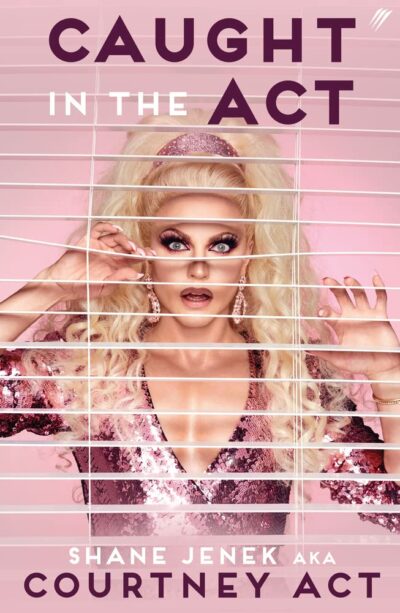I can both love and loathe celebrity auto-biographies, but I definitely loved Caught in the Act.
I can love them because they are a glimpse at the inner life of someone whose art I’ve spent years – sometimes decades! – consuming. They can add fresh context to work that I already appreciate.
I can loathe them because they are often more artifice than reality. Prose is just another method of performance. Sometimes you wind up with a few shocking revelations or debaucherous anecdotes, but that doesn’t meant you’ve gotten any closer to truly knowing the author.
(I should know – I’ve been doing it for nearly 22 years now.)
No, I’m not talking obliquely about Prince Harry’s new bestseller, Spare. The first physical, non-graphic-novel book I read this year is Caught in the Act, a memoir in three parts by Courtney Act – contestant on Australian Idol Season 1, finalist on RuPaul’s Drag Race Season 6, winner of Britain’s Celebrity Big Brother Series 21, and finalist twice-over on Australia’s Dancing With The Stars.
That’s quite a resume. I first glimpsed Courtney in her “Meet The Queens” interview for Drag Race in 2014 and I was instantly transfixed. I had seen drag queens before and I understood they were often men dressed in exaggerated versions of feminity, but Courtney looked more like a glamorous pop star.
Little did I know how right I was, but also how much that dichotomy often plagued Courtney. (She is credited both as Courtney Act and as Shane Jenek on the book’s cover and is comfortable with either he/him or she/her pronouns.)
The three acts of Caught in the Act are Courtney’s childhood in suburban Australia, her coming out of the closet and into the Sydney drag scene, and her international stardom (and ensuing relationships). I found each portion fascinating, but I think the one that affected me the most (and most unexpectedly) was the portion of the book about Courtney’s childhood.
Courtney and I virtually the same age, separated by only a few months. Even though we grew up across the globe from each other in different cultures, we were exposed to much of the same pop culture. Courtney talks about Madonna and the X-Men, which is shockingly familiar to me. She also talks about years of suffering in silent confusion as she tried to work out why some things in life were “boy things” and some were “girl things.” That felt familiar too.
Early in the book, she says:
I wish there’d been honest and frank conversations going on as well as visible queer people in the world and on TV. I can’t begin to explain what a significant difference that would have made, or what a difference increased visibility since then has made for queer kids today. Growing up in a world of queer invisibility was so isolating. The strange part is I didn’t know I was isolated – I didn’t know I was learning shame, or to hid who I was for safety: it came instinctively for survival. Every now and again I wonder if I’ve retrofitted shame where it didn’t exist. Then I remember: shame is a deposit made for a future debt, and it accumulates over time with compound interest.
That idea that we can’t tell if our adult shame is the same as our childhood shame bowled me over. I stopped and stared in shock at that page for a long while. I’ve never read someone so clearly explaining why the process of coming out can be so long and slow, even when surrounded by an entirely supportive environment. Courtney captures the emotions of childhood, but adds the the adult lens of someone who is on the forefront of conversations about gender all around the world.
What shocked me most about Caught in the Act wasn’t Courtney’s backwards tumble into fame, her drug use, or her sexual encounters. No, the most-revealing aspect of this book is just how long it took her to come to terms with her own gender identity. [Read more…] about Crushing On: Caught In The Act by Courtney Act (2022)